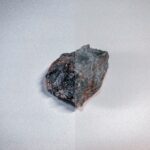Are you ready to embark on a journey through time and uncover the ancient secrets of our planet? In this article, we will delve into the extraordinary world of fossils and discover some truly fascinating facts that will captivate the mind of any sixth grader. From the bones of colossal dinosaurs to the intricate imprints of prehistoric plants, fossils have the power to transport us back in time and reveal the astonishing stories of life on Earth. So buckle up, get ready to dig deep, and prepare to be amazed by the amazing world of fossils!
Interesting Facts About Fossils for Sixth Graders
Fossils are like treasure chests that hold secrets from the past, giving us clues about the incredible creatures that once roamed the Earth. Let’s embark on an exciting journey to discover some fascinating facts about fossils that will make you feel like a real-life paleontologist!
1. Fossils Help Reconstruct Earth’s History
Fossils are the preserved remains or impressions of living organisms that can be found in sedimentary rocks. They provide scientists with valuable information about the history of life on Earth. By studying fossils, paleontologists can piece together the puzzle of how different species evolved and better understand the changes that occurred over millions of years.
“Fossils are like time capsules that allow us to travel back in time and witness the wonders of ancient life.”
2. Fossils Come in Different Forms
Fossils can take many shapes and sizes, from bones and teeth to footprints and even microscopic remains. Microfossils, which are tiny fossils, can be quite challenging to identify. But don’t let their size fool you! These minuscule fossils hold massive amounts of information about ancient environments and the organisms that lived in them.
“Each fossil tells a unique story, like pieces of a puzzle waiting to be assembled.”
3. Petrification: Turning Living Material into Stone
Ever wondered how a living organism transforms into a fossil? Well, it’s a process called petrification. During petrification, the original living material slowly gets replaced by minerals like silica, calcite, or pyrite, turning it into stone. This incredible transformation helps preserve the intricate details of the organism, allowing us to study it millions of years later.
“Petrification is like nature’s way of immortalizing ancient life, freezing it in time for us to discover.”
4. Pseudofossils: Nature’s Illusions
Sometimes, nature plays tricks on us by creating patterns that resemble fossils but aren’t the real deal. These deceptive imitations are called pseudofossils. Geological processes, such as erosion or cracking, can create patterns that mimic the appearance of a fossil. While they may fool our eyes at first, paleontologists can use their expertise to distinguish between true fossils and these clever impostors.
“Pseudofossils are like nature’s little pranks, reminding us to keep a keen eye on the secrets of the Earth.”
5. Fossils and Climate Change
Did you know that fossils can help scientists study ancient climates? Paleoclimatologists use fossils as clues to figure out what Earth’s climate was like in the past. By analyzing fossils, they can uncover information about temperatures, rainfall patterns, and even the presence of ancient oceans. It’s amazing how these ancient remnants can provide valuable insights into our planet’s history.
“Fossils are like secret messages hidden within the Earth, revealing the tales of ancient climates.”
6. Fossils Unearth Astonishing Discoveries
The study of fossils has led to some mind-blowing discoveries throughout history. For example, did you know that parrots used to be three feet tall? This astonishing fact was revealed through a fossil! These extraordinary findings help us understand the diversity and evolution of life on Earth, allowing us to imagine the unimaginable creatures that once thrived millions of years ago.
“Fossils have the power to unveil mysteries that capture our imaginations and broaden our understanding of the world.”
Now that you’ve unearthed some intriguing facts about fossils, you’re well on your way to becoming a fossil expert! Whether it’s reconstructing ancient ecosystems or unraveling the secrets of long-extinct creatures, fossils offer a gateway to the past that continues to captivate and inspire. So, keep exploring, and who knows what magnificent discoveries you might make!
“As we dig deeper into the Earth’s history through fossils, we uncover the extraordinary stories of life that have shaped our planet.”
Fossils have always fascinated us with their stories from the past. If you’re in year 6 and eager to learn more about these ancient treasures, we’ve got you covered! Our website has a fantastic collection of facts about fossils for year 6 students. From the discovery of dinosaur bones to the formation of fossil fuels, you’ll delve into a world of wonder and discovery. So why wait? Click here to explore the fascinating world of fossils for year 6: facts about fossils for year 6. Don’t miss out on this incredible journey of uncovering the secrets of Earth’s history!
FAQ
Q: What is a fossil?
A: Fossils are the preserved remains or impressions of a living organism such as a plant, animal, or insect.
Q: How do fossils form?
A: Fossils can form in a number of ways, including through sedimentation and petrification. Sedimentation occurs when layers of sediment build up over time and cover the remains of an organism, preserving them. Petrification, on the other hand, happens when the living material is slowly replaced with silica, calcite, or pyrite, creating a fossil.
Q: What can fossils tell us about Earth’s history?
A: By studying fossils, scientists can learn about the past history of life on Earth. Fossils help us understand Earth’s history and the changes that have occurred over millions of years. They are often used to reconstruct the history of life on Earth, including the evolution of species and the existence of ancient creatures like dinosaurs.
Q: Are there different types of fossils?
A: Yes, there are different types of fossils. Apart from the more common ones like bones, teeth, and footprints, there are also microfossils. Microfossils are tiny fossils that are not always easy to determine.
Q: How can fossils be used in scientific studies?
A: Fossils have various scientific uses. Paleontologists study fossils to gain insights into prehistoric life, while paleoclimatologists use fossils to study ancient climates. Paleogeographers, on the other hand, use fossils to study changes in landforms over time.
- China II Review: Delicious Food & Speedy Service - April 17, 2025
- Understand Virginia’s Flag: History & Debate - April 17, 2025
- Explore Long Island’s Map: Unique Regions & Insights - April 17, 2025
















